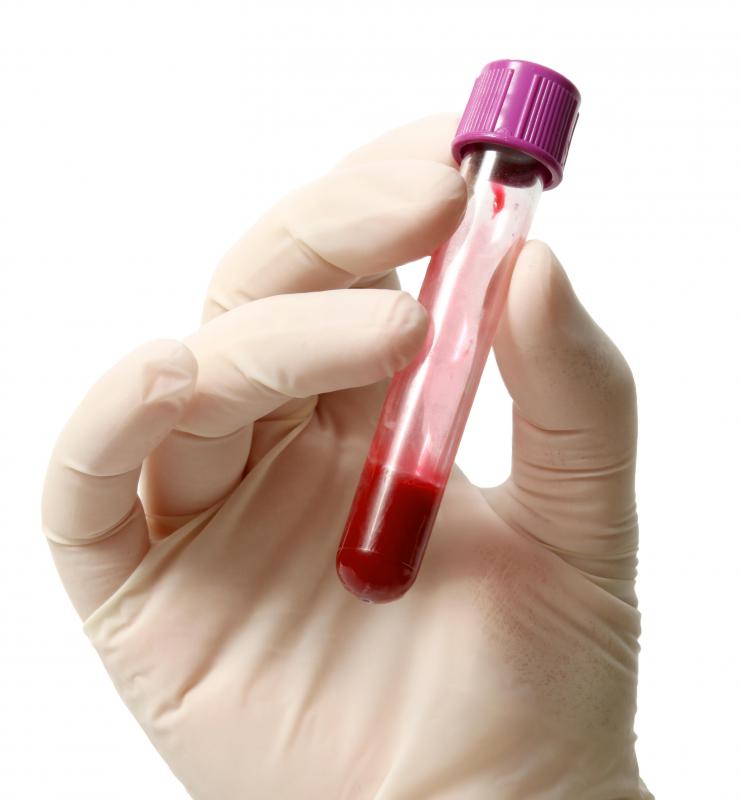At WiseGEEK, we're committed to delivering accurate, trustworthy information. Our expert-authored content is rigorously fact-checked and sourced from credible authorities. Discover how we uphold the highest standards in providing you with reliable knowledge.
What is Viremia?
Viremia is a condition in which viruses are present in the bloodstream. From the point of view of a virus, this is great news, because it means that the virus has access to a highly efficient distribution system which will spread it throughout the body. From the point of view of the owner of the body, of course, viremia is not good news at all.
Viruses can enter the bloodstream in a wide variety of ways, ranging from slipping into an open wound to being introduced by a puncture wound. Once in the bloodstream, the viruses can start to replicate, and as they replicate, they will spread through the body. This can create a situation known as secondary viremia, in which the virus has colonized other areas of the body and it is feeding new copies of itself back into the bloodstream.

A number of viruses are passed specifically through the blood, with the human immunodeficiency virus (HIV) being a very well known example. Other viruses will make the leap into the bloodstream if they see an opportunity to do so. For example, a viral infection of the respiratory tract could enter the bloodstream through cuts in the mouth.
This condition is diagnosed by taking a blood sample and examining it in a lab. The blood can be run against viral antibodies which will react if a virus is present and flag the blood, and it can also be examined under a microscope to look for copies of the virus. Microscopy can also allow a lab technician to identify a virus when a test is not available.

The treatment for viremia is administration of antiviral drugs to kill the virus. Not all viruses can be treated with medications; some have resisted the best efforts of drug developers. If no antiviral drug is available, the focus is on managing the patient's symptoms and keeping the patient as strong and healthy as possible in the hopes that the immune system will fight off the virus.

People can have chronic viral illnesses, in which they always have some copies of a virus in their blood. In these cases, doctors monitor the patient's viral load, looking at how many copies are present. If the load is low, it suggests that the patient's body is keeping the virus in check. If it is high, it means that the patient is not controlling the virus, or that secondary viremia is occurring.
AS FEATURED ON:
AS FEATURED ON:


















Discussion Comments
@strawCake - From what I understand, these days some people with HIV are practically asymptomatic since they have such a low viral load. Medical science regarding HIV and AIDs has come really far in the last ten years or so.
I know a lot of people with AIDs get secondary viral infections, so I'm not too surprised to hear about secondary viremia. I imagine secondary viremia would make treatment really difficult, because you would probably have double or triple the amount of virus in your immune system versus if you just had regular viremia.
@indemnifyme - I think when they finally find something that will work against HIV and AIDs, the research will probably apply to other chronic viral infections as well. At least I hope so, because that would be really useful.
Anyway, I always wonder what people mean when they talk about viral load. I guess they're talking about residual viremia: how many copies of the virus are present in the blood stream.
From what I understand, these days a lot of people who have HIV have a very low viral load. I assume this means they still have viremia though, but not badly enough to actually do too much damage.
Before reading this article I definitely couldn't define viremia and I never thought about how much dangerous a blood borne virus could be. However, think about the fact that your blood basically circulates throughout your entire body (including your heart). I get the feeling that a blood borne virus could do a ton of damage.
It's also really scary that anti-viral medications don't work on all viruses. Although I suppose if they did, we would have a cure for AIDs already.
Post your comments